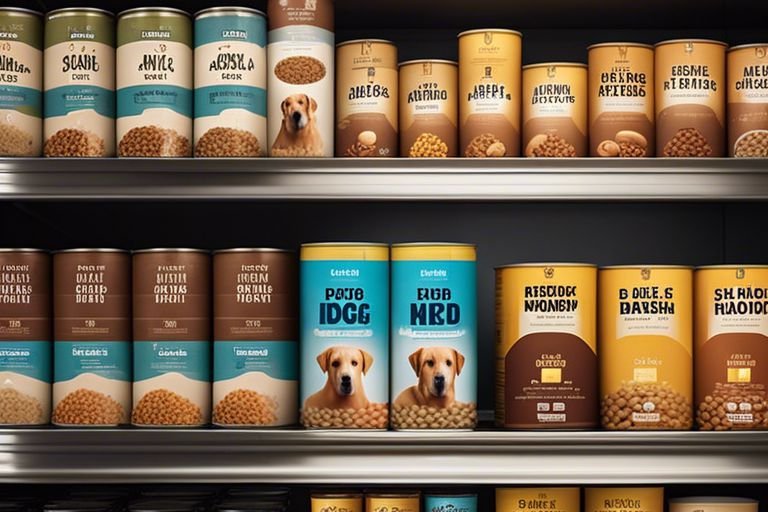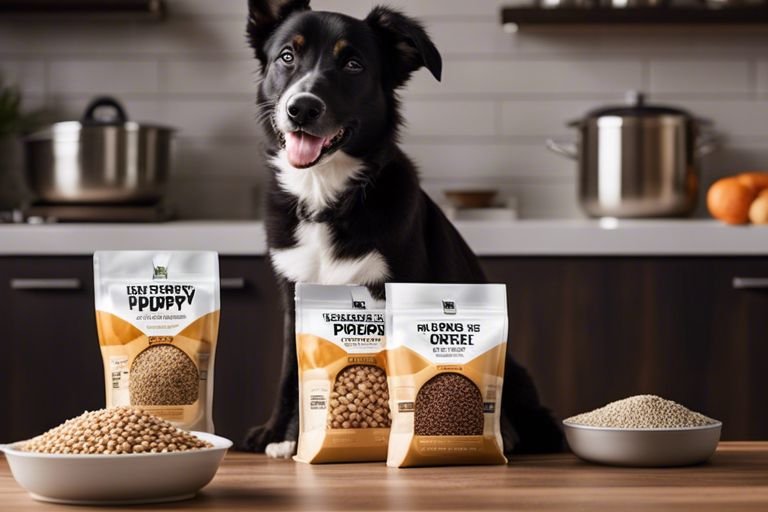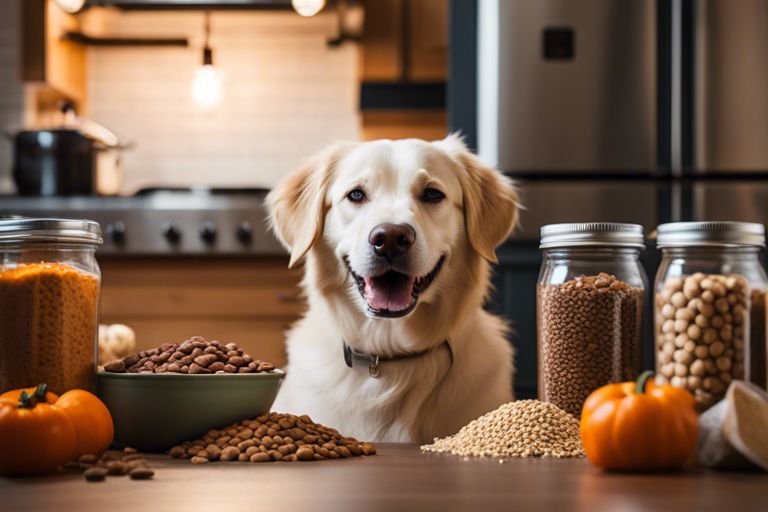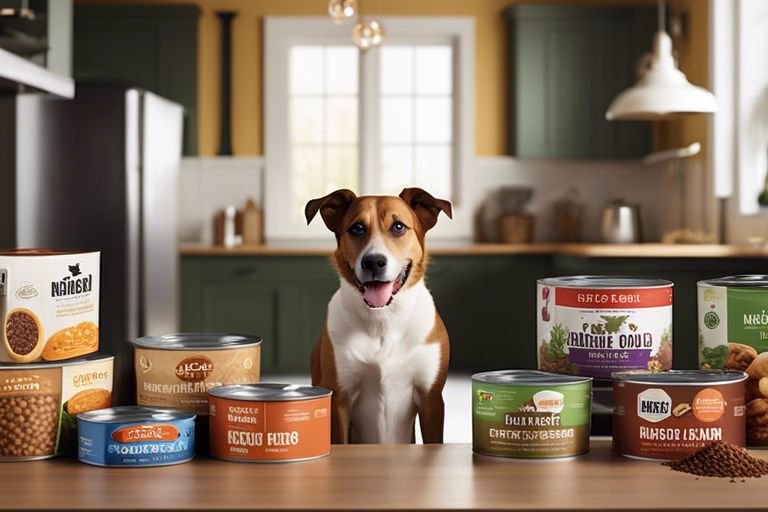Regular Dry Vs. Gluten-Free Dry Cat Food – Is There Really A Difference?

In the world of feline nutrition, the debate between regular dry cat food and gluten-free dry cat food continues to stir curiosity among cat owners. Understanding the nuances of each type can help make informed decisions about your pet’s diet. Let’s investigate the differences between these two popular options to uncover whether going gluten-free truly makes a difference in your cat’s health and well-being.
Key Takeaways:
- Ingredient Differences: Gluten-free dry cat food often uses alternative ingredients like potatoes, peas, and tapioca instead of grains like wheat, corn, and barley.
- Nutritional Content: Regular dry cat food may contain gluten, but both options can be nutritionally balanced to meet a cat’s dietary needs.
- Suitable for Allergies: Gluten-free dry cat food is a good option for cats with gluten sensitivities or allergies, leading to better digestion and overall health.
- Price Variations: Gluten-free dry cat food generally tends to be more expensive than regular dry cat food due to the cost of alternative ingredients used.
- Personalized Choice: The choice between regular and gluten-free dry cat food depends on your cat’s individual needs, health considerations, and any dietary restrictions they may have.
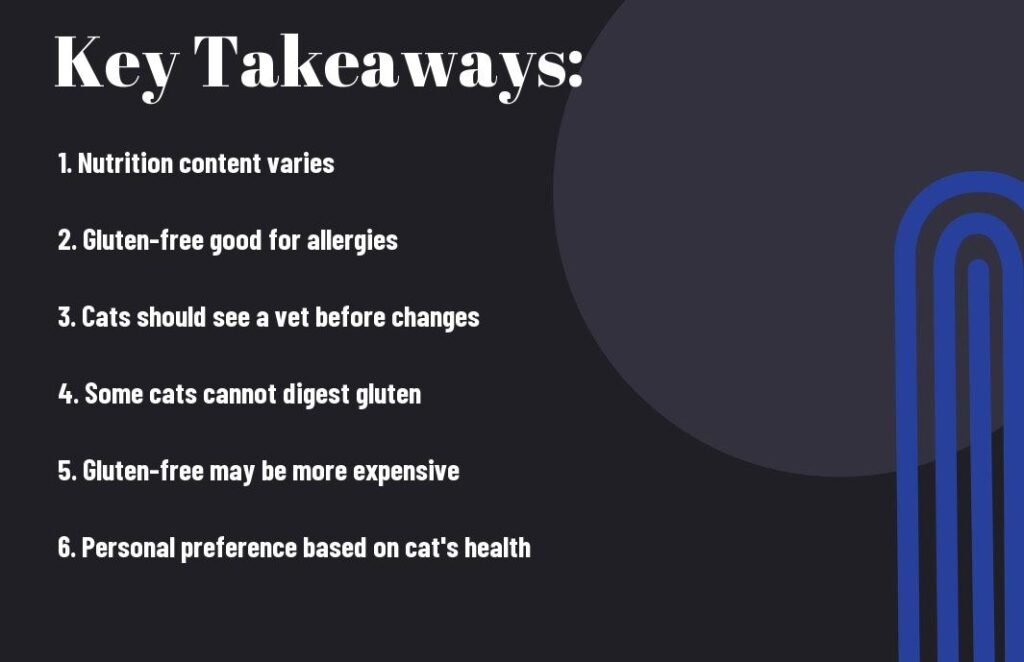
The Basics of Dry Cat Food
What is Regular Dry Cat Food?
While regular dry cat food is a staple in many feline diets, what exactly sets it apart? Regular dry cat food typically consists of a blend of ingredients such as meat byproducts, grains, vitamins, and minerals. These ingredients are mixed together to form small, bite-sized pellets that provide crucial nutrients for cats.
Regular dry cat food is convenient for pet owners as it has a longer shelf life compared to wet cat food, and it can help maintain good dental health for cats by reducing plaque and tartar buildup.
What is Gluten-Free Dry Cat Food?
While gluten-free dry cat food may sound like a trendy diet choice, it serves a purpose for cats with specific dietary needs. Gluten-free dry cat food is formulated without any gluten-containing grains such as wheat, barley, or rye. Instead, it relies on alternative sources of carbohydrates like peas, potatoes, or tapioca.
With an increasing awareness of pet food allergies and sensitivities, gluten-free dry cat food has become a popular option for cat owners looking to avoid potential allergens that could cause digestive issues or skin problems in their feline companions.
Nutritional Differences
Protein Content
To understand the difference between regular dry and gluten-free dry cat food, we need to examine their nutritional components. Protein is necessary for cats as they are obligate carnivores, relying on meat as a primary source of nutrition. Regular dry cat food typically contains protein from sources like chicken, fish, or beef. On the other hand, gluten-free options may use alternative protein sources such as pea protein or venison to cater to cats with dietary sensitivities.
Carbohydrate Sources
The carbohydrate sources in cat food can vary significantly between regular and gluten-free options. Regular dry cat food often includes grains like corn or wheat as a source of carbohydrates. In contrast, gluten-free alternatives utilize ingredients such as sweet potatoes, lentils, or chickpeas to provide energy to your feline friend.
Understanding the carbohydrate sources in your cat’s food is crucial, as some cats may have sensitivities to certain grains, leading pet owners to opt for gluten-free options. By choosing a cat food with carbohydrates that align with your cat’s needs, you can help in maintaining their overall health and well-being.
Fat Content
The fat content in cat food plays a vital role in providing energy and supporting various bodily functions. Regular dry cat food typically contains fats from animal sources such as chicken fat or fish oil. In comparison, gluten-free dry cat food may incorporate plant-based fats like flaxseed or canola oil to create a balanced nutritional profile.
Understanding the fat content in your cat’s diet is important as it can impact their skin, coat, and overall health. By selecting a dry cat food option with the right balance of fats, you can support your cat’s nutritional needs and help them thrive.

Digestive Health Implications
Not all dry cat foods are created equal when it comes to digestive health implications. Understanding the differences between regular dry and gluten-free dry cat food can shed light on how these foods affect your feline friend’s digestive system.
Gluten Sensitivity in Cats
Sensitivity to gluten in cats is not as widely recognized as it is in humans, but some felines can indeed have adverse reactions to gluten-containing ingredients. Symptoms of gluten sensitivity in cats may include gastrointestinal issues, skin problems, and even behavioral changes. Switching to a gluten-free dry cat food may help alleviate these symptoms and improve your cat’s overall well-being.
Inflammatory Responses
Inflammatory responses in the digestive system can be triggered by various factors, including food sensitivities. Gluten-containing ingredients, such as wheat, in regular dry cat food may contribute to inflammation in some cats. This can lead to digestive discomfort, nutrient malabsorption, and even chronic health issues if not addressed. Implications: Understanding the potential inflammatory responses to gluten in regular dry cat food can help cat owners make informed decisions about their pet’s diet. Opting for a gluten-free dry cat food can be a proactive choice in reducing the risk of inflammatory reactions and promoting better digestive health for your cat.
Gut Health and Immune System
Gluten, when not well-tolerated by a cat, can disrupt the delicate balance of the gut microbiota. This imbalance may compromise the immune system and lead to increased susceptibility to infections and illnesses in cats. Switching to a gluten-free dry cat food can help maintain a healthy gut environment and support a robust immune system in felines. Understanding how gluten can impact gut health and the immune system in cats underscores the importance of choosing the right dry cat food for your pet. By opting for a gluten-free option, you can potentially reduce the risk of digestive issues and bolster your cat’s overall health and well-being.
Ingredient Quality Comparison
Unlike Gluten Free Cats?, the quality of ingredients in regular dry cat food versus gluten-free dry cat food can significantly impact your feline friend’s health and well-being. Let’s examine into the specifics of each to understand the differences better.
Regular Dry Cat Food Ingredients
| Regular Dry Cat Food | Gluten-Free Dry Cat Food |
| One of the primary ingredients in regular dry cat food is often grain-based fillers like corn, wheat, or soy. These fillers may not provide optimal nutrition for your cat and can sometimes lead to digestive issues. |
Gluten-Free Dry Cat Food Ingredients
| Regular Dry Cat Food | Gluten-Free Dry Cat Food |
| Any gluten-free dry cat food typically relies on high-quality protein sources like real meat, fish, or poultry as the primary ingredients. These sources offer imperative nutrients that are closer to what cats naturally consume in the wild. |
Comparison: When comparing the ingredient lists of regular dry cat food with that of gluten-free options, it becomes evident that the emphasis on quality protein sources in gluten-free variants can provide more beneficial nutrients for your cat’s diet. Opting for gluten-free dry cat food may lead to improved digestion, a shinier coat, and overall better health outcomes for your beloved pet.
Additives and Preservatives
With regular dry cat food, additives and preservatives are often used to enhance flavor, texture, and shelf life. While these additives may not necessarily be harmful in moderation, some cats might exhibit sensitivities to artificial ingredients present in these foods.
Regular dry cat food may contain artificial colors, flavors, or preservatives that could potentially trigger allergic reactions in some cats. Conversely, gluten-free dry cat food typically relies on natural preservatives and avoids artificial additives, making it a safer choice for cats with sensitivities.
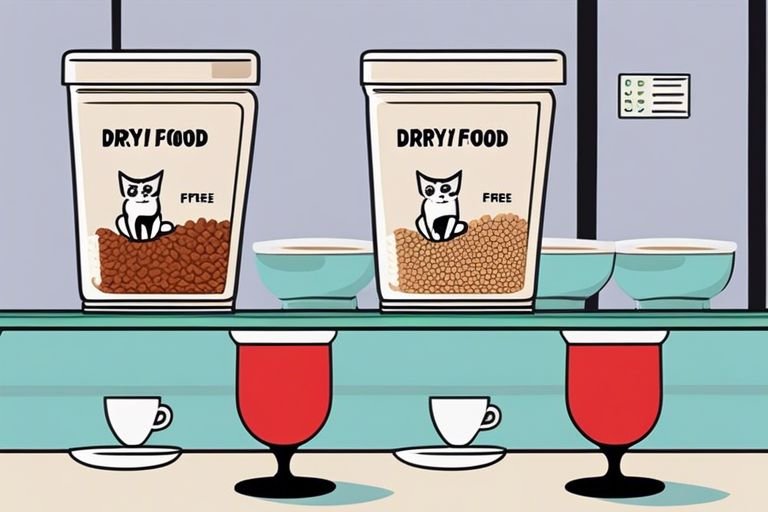
Palatability and Texture
Taste Preferences in Cats
To truly understand the differences between regular dry and gluten-free dry cat food, we must examine into the intricate world of feline taste preferences. Cats are known for being discerning eaters, with individual preferences that can vary widely from one feline to another. Some cats may prefer the rich flavors found in certain types of protein, while others may have a preference for a specific texture or shape of kibble.
Kibble Texture and Shape
Texture and shape play a crucial role in a cat’s dining experience. Cats have unique preferences when it comes to the texture and shape of their food. Some cats may enjoy crunchy kibble that helps keep their teeth clean, while others may prefer a softer, more tender texture. The shape of the kibble can also influence how a cat consumes its food, with some cats favoring small, round shapes over larger, irregularly shaped pieces.
Plus, the texture of the kibble can impact a cat’s overall satisfaction with its meal. Cats may be more likely to enjoy and digest food that aligns with their texture preferences, making it important for pet owners to consider their feline’s individual tastes when selecting the right dry cat food option.
Moisture Content
Cats have specific moisture requirements to maintain optimal health. When comparing regular dry and gluten-free dry cat food, one crucial factor to consider is the moisture content of the food. Regular dry cat food typically has a lower moisture content compared to gluten-free options, which may contain more moisture-rich ingredients like meat or vegetables.
Palatability, or how appetizing a food is to a cat, is heavily influenced by its moisture content. Cats with a preference for moist foods may find gluten-free dry cat food more appealing due to its higher moisture content. Understanding your cat’s moisture preferences can help ensure they are receiving a diet that meets their unique needs and tastes.
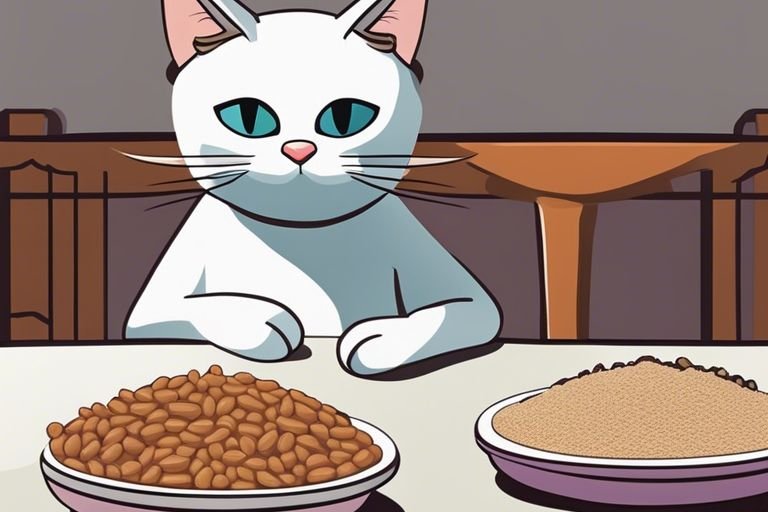
Cost and Availability
Price Comparison
One important factor to consider when comparing regular dry cat food with gluten-free options is the cost. Here is a breakdown of the price comparison between the two types:
| Regular Dry Cat Food | Gluten-Free Dry Cat Food |
| $$ | $$$ |
Brand Options and Availability
With so many brands and options available in the market today, choosing the right dry cat food can be overwhelming. It is crucial to consider the availability of both regular and gluten-free options in your area.
It is recommended to check with local pet stores, supermarkets, and online retailers to compare the brands and availability of both types of dry cat food. Some premium brands may offer a wider selection of gluten-free options, but they might come at a higher price.
Online vs. In-Store Purchasing
With the convenience of online shopping, pet owners now have the option to purchase dry cat food from the comfort of their homes. Online retailers often offer a broader range of brands and specialty products, including gluten-free options.
The availability of regular dry cat food is usually higher in-store compared to gluten-free options. However, purchasing online can provide more variety and convenience, especially for pet owners with busy schedules or limited access to specialty pet stores.
To wrap up
Following this meticulous analysis, it’s evident that there are substantial differences between regular dry cat food and gluten-free dry cat food. The distinct characteristics of each type make it crucial for pet owners to consider their feline companions’ individual dietary needs and potential sensitivities. While regular dry cat food may be more cost-effective and widely available, gluten-free options offer a tailored solution for cats with specific dietary requirements. Understanding these disparities empowers pet owners to make informed decisions that prioritize their cats’ health and well-being.
Ultimately, the choice between regular dry and gluten-free dry cat food comes down to balancing factors such as nutritional content, affordability, and potential health benefits. By delving into the nuances of these products, pet owners can confidently select the most suitable option for their furry friends. Whether opting for traditional offerings or exploring specialized alternatives, providing high-quality nutrition is paramount in promoting the longevity and vitality of beloved feline companions.
FAQ
Q: What is the difference between Regular Dry and Gluten-Free Dry Cat Food?
A: Regular Dry Cat Food typically contains grains like wheat, corn, and rice, while Gluten-Free Dry Cat Food is made without these grains to cater to cats with sensitivities or allergies.
Q: Are there any benefits to feeding my cat Gluten-Free Dry Food over Regular Dry Food?
A: Cats with grain sensitivities or allergies may benefit from Gluten-Free Dry Cat Food as it eliminates common allergens found in Regular Dry Cat Food, promoting better digestion and overall health.
Q: Can all cats eat Gluten-Free Dry Cat Food, even if they don't have sensitivities?
A: Yes, all cats can eat Gluten-Free Dry Cat Food as it offers a well-rounded and easily digestible alternative to Regular Dry Cat Food, providing a nutritional boost for all feline friends.
Q: Is Gluten-Free Dry Cat Food more expensive than Regular Dry Cat Food?
A: Gluten-Free Dry Cat Food can be slightly more expensive than Regular Dry Cat Food due to the use of alternative ingredients and specialized production processes. However, the price difference may vary depending on the brands and specific formulas.
Q: How can I determine if my cat needs to switch to Gluten-Free Dry Cat Food?
A: If your cat exhibits symptoms of food allergies such as skin irritations, digestive issues, or frequent vomiting, it might be worth trying Gluten-Free Dry Cat Food to see if their condition improves. Always consult with your veterinarian before making any dietary changes for your cat.
